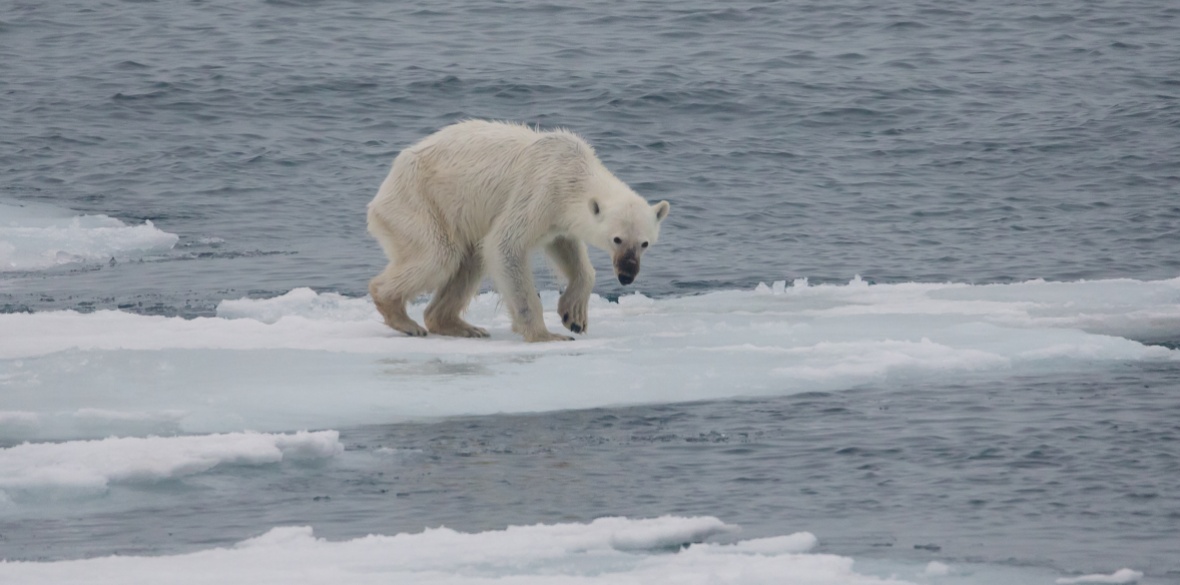This is the last article you can read this month
You can read more article this month
You can read more articles this month
Sorry your limit is up for this month
Reset on:
Please help support the Morning Star by subscribing here
EVERY day brings fresh and ever more alarming news about the state of the global environment. To speak of mere climate change is now inadequate, for we are in a climate emergency. It seems as though we are tripping over more tipping points than we knew existed.
But our awareness is at last catching up with the planet’s climate catastrophes. Climate anxiety, climate trauma and climate strikes are now part of many people’s mental landscape and daily lives. This is almost four decades after scientists first began to warn of accelerated global warming caused by carbon dioxide increases in the atmosphere.
And so, unsurprisingly, climate fiction, climate-change fiction, “cli-fi” — whatever you want to call it — has emerged as a literary trend that’s gained astonishing traction over the past 10 years.
Just a decade ago, when I first began reading and researching literary representations of climate change, there was a curious dearth of fiction on the subject. In 2005, environmental writer Robert Macfarlane had asked plaintively: “Where is the literature of climate change?”
When I went to work in 2009 on one of the first research projects to attempt to answer this question, I found that some climate-change novels were only beginning to emerge. Ten years later, the ubiquity of cli-fi means that the question of how many cli-fi novels there are seems irrelevant. Equally irrelevant is any doubt about the urgency of the climate emergency.
But the question of how to deal with such a complex challenge is paramount. The climate emergency demands that we think about our responsibilities on a global scale rather than as individuals, to think about our effects not just on fellow humans but on all the species that call this planet home and to think about changing the resource-focused, profit-seeking behaviours that have been part of human activity for centuries.
This is where literature comes in. It affords us the headspace in which to think through these difficult and pressing questions.
Cli-fi has a central role in allowing us to do the psychological work necessary to deal with climate change. I am often asked to identify the climate novel that is the most powerful and effective and, just as often, I reply that no one novel can do this. The phenomenon of cli-fi as a whole offers us different ways and a multitude of spaces in which to consider climate change and how we address it.
Here, then, is my list of a range of novels that offer just such a diverse set of perspectives. These books provide readers with a range of thought — and feeling — experiments, from dystopian despair to glimmers of hope, from an awareness of climate change impacts on generations to come to vivid reminders of how we are destroying the many other species that share our planet.
The Sea and Summer (1987) by Australian novelist George Turner is one of the earliest examples of cli-fi and is prescient in more ways than one. Set in Melbourne in the 2030s, skyscrapers are drowning due to sea-level rise — a setting for a stark division between the rich and the poor.
Like much cli-fi, this novel’s dystopian future provides a sophisticated thought experiment concerning the effects of climate change on our already divided society. Turner’s book deserves to be reread — and reissued — as classic and still relevant cli-fi.
Water has become a scare commodity in cli-fi dystopia Memory of Water (2012) by Finnish author Emmi Itaranta. In Nordic Europe in the distant future, a young girl must decide whether to share her family’s precious water supply with her friends and fellow villagers and risk being accused of “water crime,” punishable by death.
This tender coming-of-age narrative is also a meditation on the value of resources taken entirely for granted by the contemporary Westernised reader.
At first glance, John Lanchester’s novel The Wall (2019) could be a comment on the rise of anti-refugee sentiment in Britain.
In a not-so-distant future, every inch of British shoreline is guarded by an immense wall, a bulwark against illegal migrants as well as rising sea levels.
But, through the experiences of a young border guard, the novel shows us how this national obsession with borders not only distracts from the climate emergency at hand, it diminishes our responsibility to fellow humans around the world, whose lives are threatened by climate change and for whom migration is a desperate solution.
Clade (2015) by Australian author James Bradley chronicles several generations of one family in an increasingly devastated world. The day-to-day detail of their lives, as relationships hold together or break apart, unfolds against the backdrop of environmental and thus societal breakdown.
The novel contrasts the mundane miscommunications that characterise human relations with the big issue of global warming that could rob future generations of the opportunity to lead meaningful lives.
Jeanette Winterson’s stab at cli-fi in The Stone Gods (2007) offers, like Bradley’s book, a long view. The novel ranges over three vastly different timeframes — a dystopian, future civilisation that is fast ruining its planet and must seek another, 18th-century Easter Island on the verge of destroying its last tree and a near-future Earth facing global environmental devastation.
As readers time travel between these stories, we find, again and again, the damage wrought by human hubris. Yet the novel reminds us, too, of the power of love. In the novel, it signifies an openness to other humans and other species, new ideas and better ways of living on this planet.
The Swan Book (2013) by indigenous Australian author Alexis Wright is unconventional, fable-like cli-fi. Its protagonist is a young indigenous girl whose life is devastated by climate change but most of all by the Australian government’s mistreatment of its indigenous populations.
Weaving indigenous belief with biting satire, Wright’s novel is a celebration of her people’s knowledge of how to live with nature, rather than in exploitation of it.
Unlike the other books on this list, Flight Behaviour (2012) by Barbara Kingsolver is a realist novel set entirely in the present day. In it, a young woman from Tennessee stumbles upon thousands of monarch butterflies roosting on her in-laws’ land, the insects having been thrown off course by extreme weather events brought about by climate change.
From the scientists who come to study the problem, she learns of the delicate balance that is needed to keep the butterflies on course.
Kingsolver’s rich descriptions of an impoverished Appalachian community are combined with her biologist’s training, so that the reader’s empathy is eventually shifted from the likeable heroine to the natural wonder that is the butterflies.
We are reminded of how climate change risks not simply human comfort but the planet’s ecological complexity.
Adeline Johns-Putra is a reader in English literature at the University of Surrey. This article first appeared in The Conversation, theconversation.com












